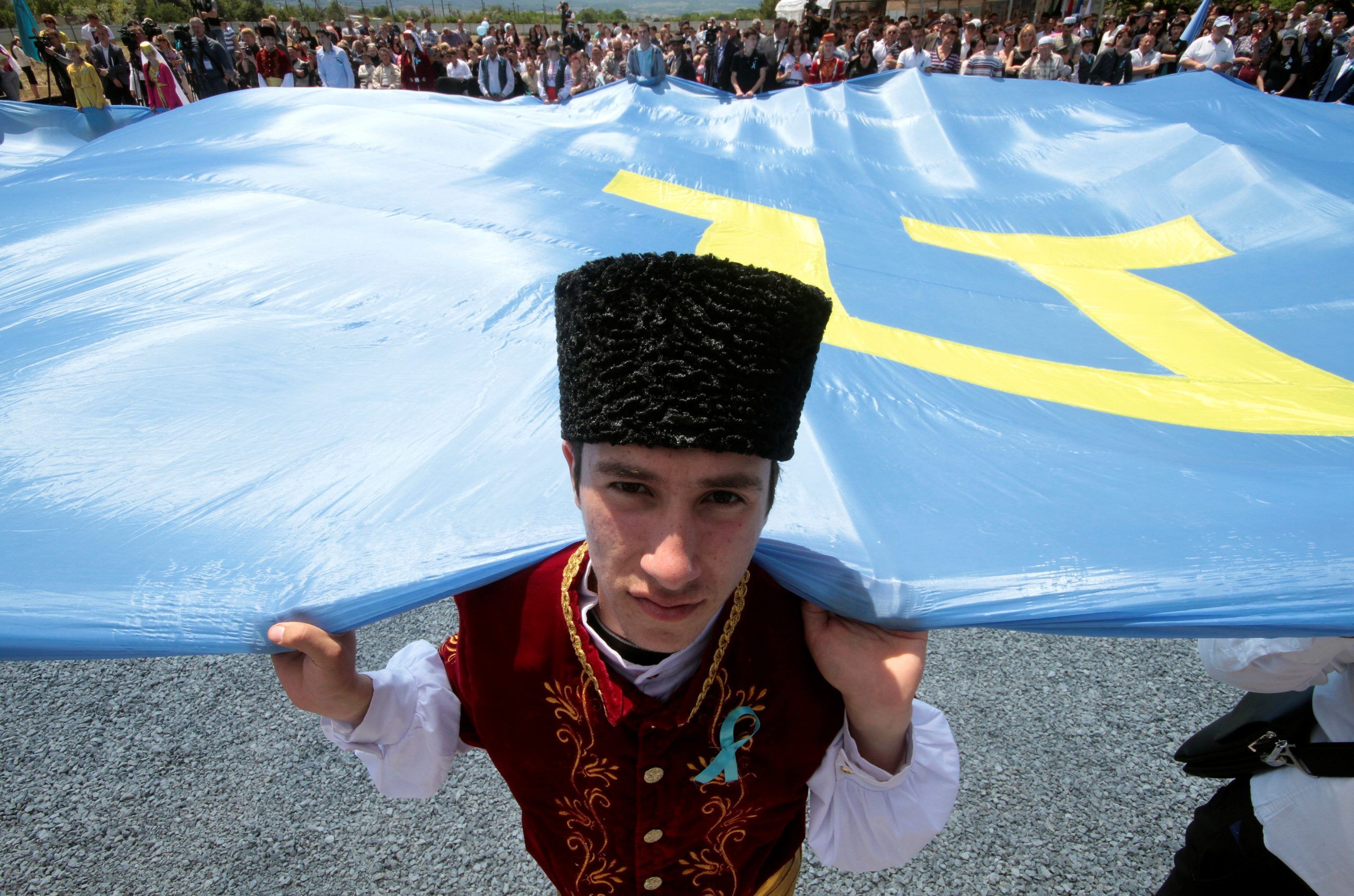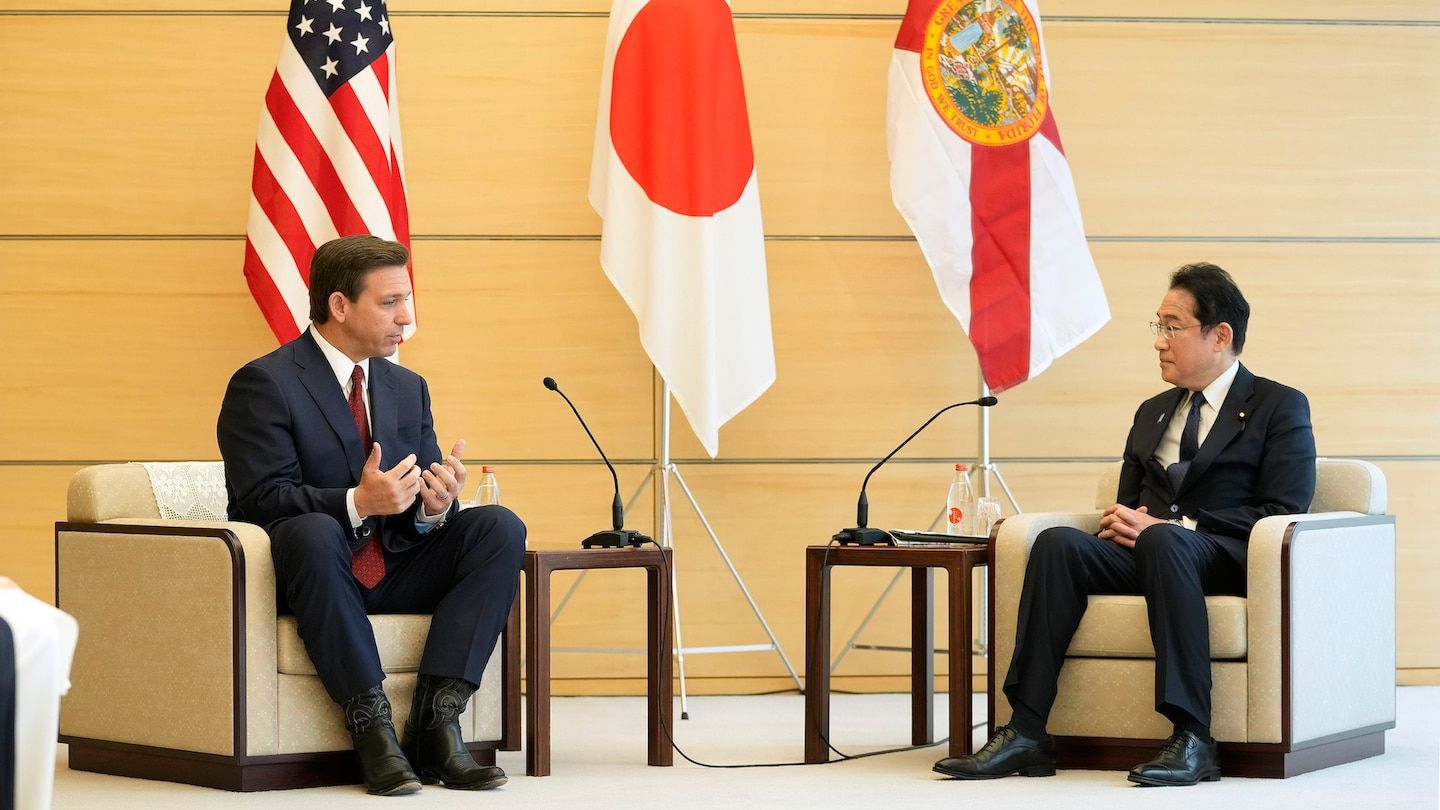What Started in Crimea Should End in Crimea
Crimea, the symbol of Russia’s new imperialism, should now become a symbol of its defeat. Otherwise Ukraine, and the wider Black Sea region, will never know peace.
Crimea has repeatedly been referred to as a red line for Russia, suggesting any attempt to retake it would be likely to trigger wider escalation. However, it is clear to Ukraine’s leadership and population that leaving the peninsula in Russia’s claws would mean continued suffering for much of the population and a constant threat hanging over the rest of Ukraine and the region.
“There will be no security and freedom of maritime navigation without a liberated Crimea,” said Olya Korbut, an analyst on sanctions at the Black Sea Institute of Strategic Studies and In-resident Fellow at the Center for European Policy Analysis (CEPA.) “Russia has been using the occupied peninsula as a military base, causing sea lane closures and risks for both military and commercial movement in the region.” NATO and its allies should significantly increase their presence in the sea, she said.
Moscow annexed Crimea in March 2014, opening a global security Pandora’s box. It enabled Putin to increase his support among the Russian population, consolidate power and test the readiness of the West to sacrifice its values for political and economic reasons. Some argue that the weak response from the global community emboldened Putin to the full-scale invasion of Ukraine. Regardless, it marked the most serious challenge to established borders since Saddam Hussein’s invasion of Kuwait in 1990.
There is therefore a good argument to be made that what started in Crimea should end in Crimea. This is not purely a symbolic argument, although symbols are important. The seizure of Crimea has been remorselessly used by Putin and his propagandists to underline the return of Russian glory. Its loss would almost certainly bolster opposition to Putin and threaten his hold on power. It would also reinstate the rules-based order that the West is so keen to uphold. In the words of Ben Hodges, the former US Army Commander in Europe: “Liberating Crimea changes everything,” and not just on the battlefield.
Crimea is a central pillar of the new Russian imperial myth. According to Putin, when Nikita Khrushchev made it part of the Ukrainian Soviet Socialist Republic in 1954, Russia was not “simply robbed, it was plundered.” Justifying his annexation, the Russian president emphasized that, “In people’s hearts and minds, Crimea has always been an inseparable part of Russia.”
This, as with many other of Putin’s historical claims, was nonsense.
Crimea has changed hands numerous times, and for a long time was part of the Ottoman Empire. It was only in 1783 that Catherine II seized it and joined it to the Russian Empire, triggering centuries of oppression of its population of Crimean Tatars, whose native language is Kipchak Turkic and whose prevailing religion is Islam, and of Krymchaks and Karaims — Jewish ethnoreligious communities in Crimea. According to the 1785 census, the peninsula’s inhabitants were 85% Crimean Tatar and only 2% Russian. By 2014 it was almost 70% Russian and only 12% Crimean Tatars.
Get the Latest Get regular emails and stay informed about our work Email Δ
This is the result of a deliberate strategy, first by the Russian Empire, then the Soviet Union, and ultimately by the Russian Federation. On Stalin’s order in 1944 Crimean Tatars were forcibly deported, leading to the death of almost half their population, and this brutal tradition continues today. The annexation of Crimea caused another wave of emigration by Crimean Tatars and Ukrainians. Refat Chubarov, head of the Mejlis, Crimea’s Tatar governing body, said the current policy of the occupation authorities “has signs of genocide” and is aimed at diminishing the number of the native population through forced mobilization into the Russian armed forces, and increased displacement.
The Kremlin claimed 97% of the population of Crimea voted in favor of joining Russia in Putin’s bogus 2014 referendum. According to a leaked report by the Russian president’s own Council for Civil Society and Human Rights, however, the estimated turnout was 30%, with only just over half voting for rule by Moscow. Crimean Tatar leaders called for a boycott of the vote, arguing the results were predetermined.
In the nine years since, Russia has committed gross human rights violations and alleged war crimes against the population, including targeted attacks on activists, human rights defenders, journalists, and lawyers. There are more than 150 Crimean political prisoners in occupied Crimea and Russia, and many arbitrarily detained Ukrainians from the newly-occupied territories are being held in Crimea.
It would provide an enormous boost for Ukraine and its people to throw the occupiers out and regain such a symbolically and strategically important part of its territory. NATO too has much to gain from the eviction of Russians from the peninsula. Before 2014, Russia had about 12,000 military personnel in the Black Sea Fleet, and by 2020 this number had risen to 31,500. Before the full-scale invasion, it was expected to extend to more than 45,000 by 2025.
There are many winners from the liberation of Crimea and only one loser — Russia’s colonial project.
Elena Davlikanova is a Democracy Fellow with the Center for European Policy Analysis. Her work is focused on analyzing opportunities for Ukraine-Russia reconciliation with regard to fascism and totalitarianism in Russia and their effects on Russia. She is an experienced researcher, who in 2022 conducted the studies ‘The Work of the Ukrainian Parliament in Wartime’ and ‘The War of Narratives: The Image of Ukraine in Media.’
Maria Kurinna is a Ukrainian human rights expert, former diplomat, and researcher. She has been an advocate for Ukraine at the UN Human Rights Commission, the OHCHR, CEDAW, the Council of Europe, and the European Parliament. Currently, she serves as an international human rights advocacy manager at Human Rights House Crimea and as an advisor at the ZMINA Human Rights Centre.
Europe’s Edge is CEPA’s online journal covering critical topics on the foreign policy docket across Europe and North America. All opinions are those of the author and do not necessarily represent the position or views of the institutions they represent or the Center for European Policy Analysis.
Source: Center for European Policy Analysis


